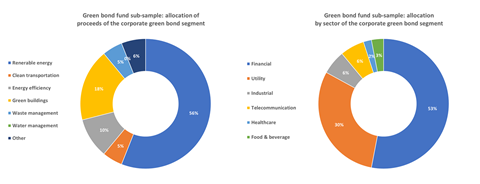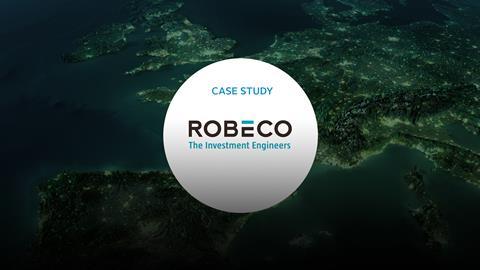| ORGANISATION DETAILS | |
|---|---|
| Name | Robeco |
| Signatory type | Investment manager |
| Region of operation | Global |
| Assets under management | €173bn (December 2019) |
| COVERED IN THIS CASE STUDY | |
|---|---|
| Name of fund | RobecoSAM Global Green Bond Fund |
| Geography | Global |
| Asset class | Green bonds |
In April 2020, Robeco launched a Global Green Bond (GB) fund. The eligibility of GBs is based on a proprietary framework, under which the use of issuance proceeds should be aligned with the EU Taxonomy. The taxonomy is a useful tool to differentiate green activities from non-green activities. Moreover, this framework will significantly contribute to providing financing to companies that prioritise sustainability. Further, the taxonomy enables investors to make informed decisions around the sustainability of particular activities.
Taxonomy implementation
Robeco has developed a five-step framework for determining whether a corporate or sovereign bond is green. The GB has to pass all five steps to be considered an eligible investment.
- Our first step was to align the issuer’s green bond framework with industry standards, such as the Climate Bond Initiative (CBI), the Green Bond Principles, or regional standards, such as the EU Green Bond Standard.
- Then, in the allocation of proceeds stage, we analysed underlying projects that will be financed through the green bond issuance, assessing their alignment with the EU Taxonomy (which at present covers two of the six environmental objectives - climate change mitigation and adaptation - as well as the DNSH criteria).
- Next, we examined the positive contribution of the use of proceeds to the environmental objective, as well as evaluating external assurance on the reported impact.
- We then looked at the issuer’s environmental strategy, as we aim to preclude investments in a business that is not making significant steps towards becoming more sustainable.
- Finally, our scrutiny of the issuer’s conduct included screening to ensure that none of its actions violated the UN Global Compact (UNGC) and that it was not subject to international sanctions. For this case study, we analysed 40 GBs with diverse issuers, representing 47% of the total GBs Fund.
Alignment results
GBs are a suitable asset to evaluate investment alignment with the EU Taxonomy, as asset allocation across activities is clearly defined and disclosed. The external assurance on disclosure provides confidence around the predicted positive environmental impact of financed projects.
GBs issued by utility companies are well-positioned to be taxonomy-eligible, as eligibility thresholds for renewable energy projects are simple to assess. Moreover, the majority of GBs that finance renewable projects from our sample provided sufficient disclosure to determine eligibility in line with the taxonomy’s activity thresholds and Do No Significant Harm (DNSH).
While the financial sector itself is not included as an activity in the taxonomy, the underlying projects financed by the GBs issuer qualified as green projects and were aligned.
We believe the framework of our fund enables assessment of GBs alignment and facilitates their contribution to the taxonomy’s environmental goals.
Portfolio by use of proceeds and by sector

| Information up to 26 June 2020. Source: Robeca, green allocation bond reports of each issuer.1 | Information up to 26 June 2020. Source: Bloomberg, Robeco. |
Challenges and solutions
| NO. | CHALLENGE | SOLUTION |
|---|---|---|
| 1 | Difficulty in analysing GBs from financing activities described in the taxonomy, as requiring further research, such as 5G networks in the telecom sector. | We initially assessed 5G projects as neutral based on their contribution to energy efficiency and CO2-e emission reduction. We included them if the issuer was able to demonstrate how this contribution, together with other CAPEX financed by the GBs, will lead to environmental gains. |
| 2 | Companies outside the EU (Emerging Markets, US) reported different activity qualifications when assessing their green projects, which did not precisely match with the taxonomy. | We determined that when activity qualifications mentioned in the Green Bonds Framework of non-EU companies corresponded to high standards across the industry, the GB could potentially be aligned with the taxonomy. |
| 3 | Some green bond proceeds have been used to finance activities that are not covered in detail in the EU Taxonomy Annex, though they potentially match the other four objectives of the taxonomy, such as restoration of native forests and protection and restoration of biodiversity and ecosystems. | We made a preliminary assessment of these GBs as potentially taxonomy-aligned pending the publication of detailed information on the other four environmental objectives. |
Recommendations
In the case of fixed income funds, it is better to assess their alignment to the taxonomy by using the proceeds of the bond issuance, rather than those of the industry to which the issuer belongs.
References
1 The category other includes biodiversity and conservation activities, restoration of native forests, and other types of activities.












